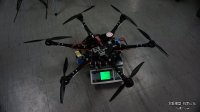BorisS
Drone Enthusiast
Hi Guys,
since there are not to many prop sizes pitch etc options out there and mainly a problem for HL configs, since the bigger props are very heavy XOAR etc comparing to CF 12 3.8 porps out there with 11 grams. I wanted to ask addressing the HL pilots what prop size pitch size based on a light weight CF would be needed and demanded.
Thanks
Boris
since there are not to many prop sizes pitch etc options out there and mainly a problem for HL configs, since the bigger props are very heavy XOAR etc comparing to CF 12 3.8 porps out there with 11 grams. I wanted to ask addressing the HL pilots what prop size pitch size based on a light weight CF would be needed and demanded.
Thanks
Boris

